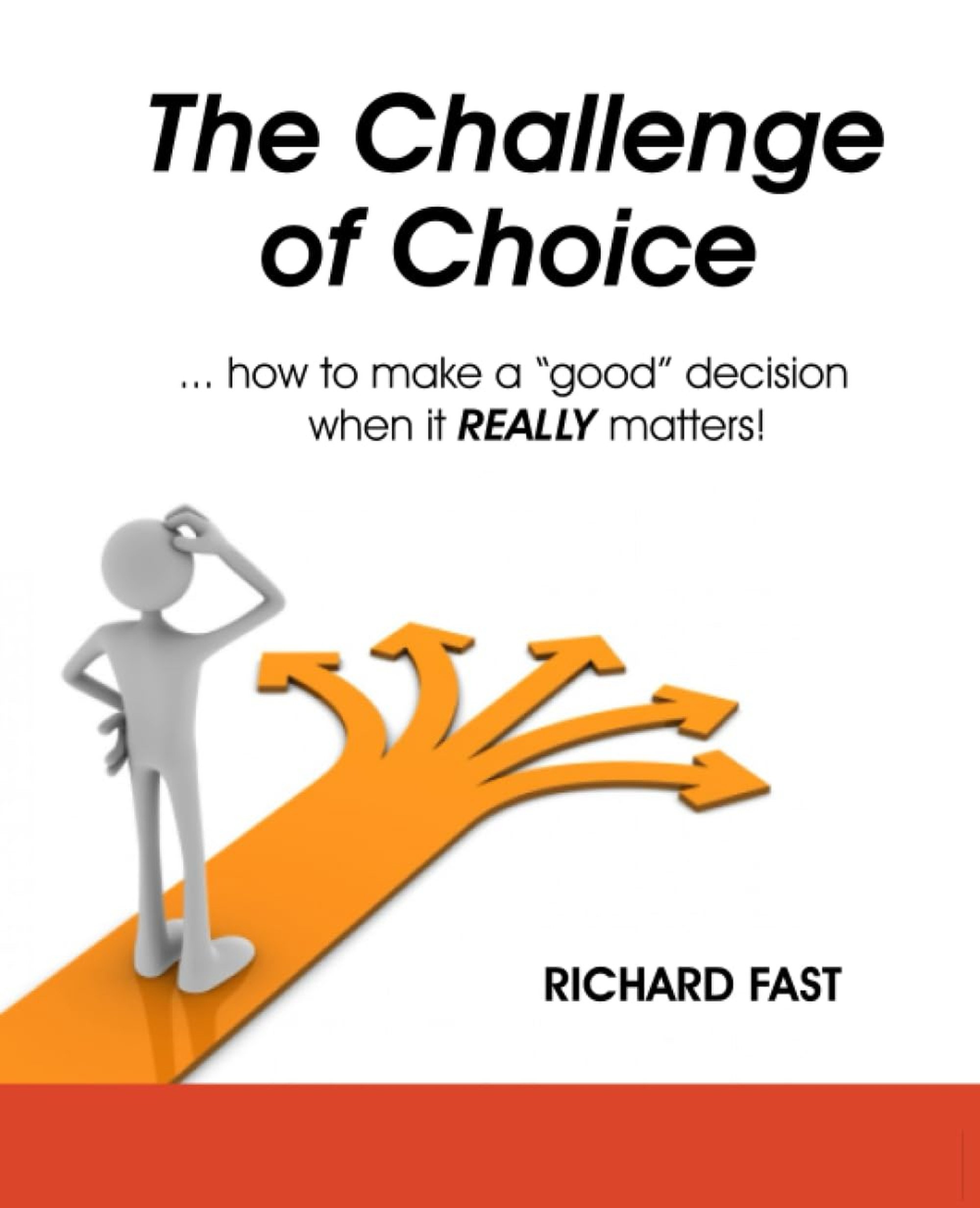
How do you make the right decision? A simple 7-step process can help – because your brain is frequently wrong
- In The Challenge of Choice … How to Make a ‘Good’ Decision When It REALLY Matters!, Richard Fast reveals how to make a GOOD decision, not just an OK one
- In his book, Fast explains that the cause of bad decisions is actually the way our brain works and reveals how his seven-step process works
Decisions, decisions, decisions … our lives are filled with them.
Some are small, like what to make for dinner or which television show to watch tonight. Even small decisions like these can be difficult to make, but they are not likely to impact your life over the long term.
Others, however, can actually have life-changing implications – and that is the kind author Richard Fast examines in his book, The Challenge of Choice … How to Make a “Good” Decision When It REALLY Matters!.

He goes on to say that “feeling right” and “being right” are not the same thing, which is ultimately the problem. Just when you feel confident in your decision that is exactly the time you would be “wise to re-evaluate your choice”.
But who does that? This is where the challenge comes into play.
Cognitive behavioural therapy, a deceptively simple mental health tool
“ … The key to becoming a skilled decision-maker, and enjoying a lifetime of decisional success, is to become acutely aware of the most common pitfalls of poor decisions while at the same time learning to follow a rational, simple decision-making formula.
“Becoming a skilled decision-maker is not about constantly striving to be right – it’s about being right when it really counts, and that is something every one of us can learn to do.”
This book is chock-full of great information, fun facts, interesting quizzes, and fascinating real-world examples.
Before you even begin, you are asked to answer the “19 Very Short, Very Quick Questions” quiz which is a great jumping-off point to learning about yourself, how your brain works, and your usual decision-making process.
You do not perceive what’s out there; you perceive whatever your brain tells you to perceive … and your brain is frequently wrong
One of my very favourite quotes, by French-born American writer Anais Nin, opens up an early chapter, “We don’t see things as they are, we see things as we are.”.
In chapter two, Fast talks about making sense of your senses.
As he mentions, “You’re certainly entitled to put complete trust in your senses, but if you do you’d be wrong!”.
The author explains that our “personal reality isn’t the perception of what is actually ‘out there,’ but rather it’s an observation of what is going on inside our heads”.
Bedroom secrets of Asia’s wealthy and the therapy that saved relationships
Fast goes on to explain that the cause of bad decisions is actually the way our brain works.
Think about those “quizzes” floating around on social media – is the dress blue and white or is it white and gold? Everyone seems to “see” it differently, but how can that be?

“You do not perceive what’s out there; you perceive whatever your brain tells you to perceive … and your brain is frequently wrong, which means that when it comes to making important decisions the ramifications are huge!”
In the next several chapters of the book, Fast amazes the reader with examples and explanations about second-guessing your sight, taste, sensorimotor illusions, etc.
The key is to learn how to spot these cognitive illusions, including cognitive laziness, confirmation bias, regression to the mean, status quo bias and so much more, which all help to “lead to poor choices and bad judgments and once you can do that then you can learn how to follow a decision-making process to help you make those all-important life-changing decisions with total confidence”.
Hong Kong mental health charity offers free support amid post-Covid ‘crisis’
Fast calls his seven-step decision-making process “The Anatomy of a Good Decision” and he shows you this step-by-step process to help you make good decisions when it really matters.
This is a wonderful book with extremely valuable and interesting information. Have some big important decisions coming up in your future? Then let Richard Fast teach you how to make a GOOD decision … not just an OK one.

